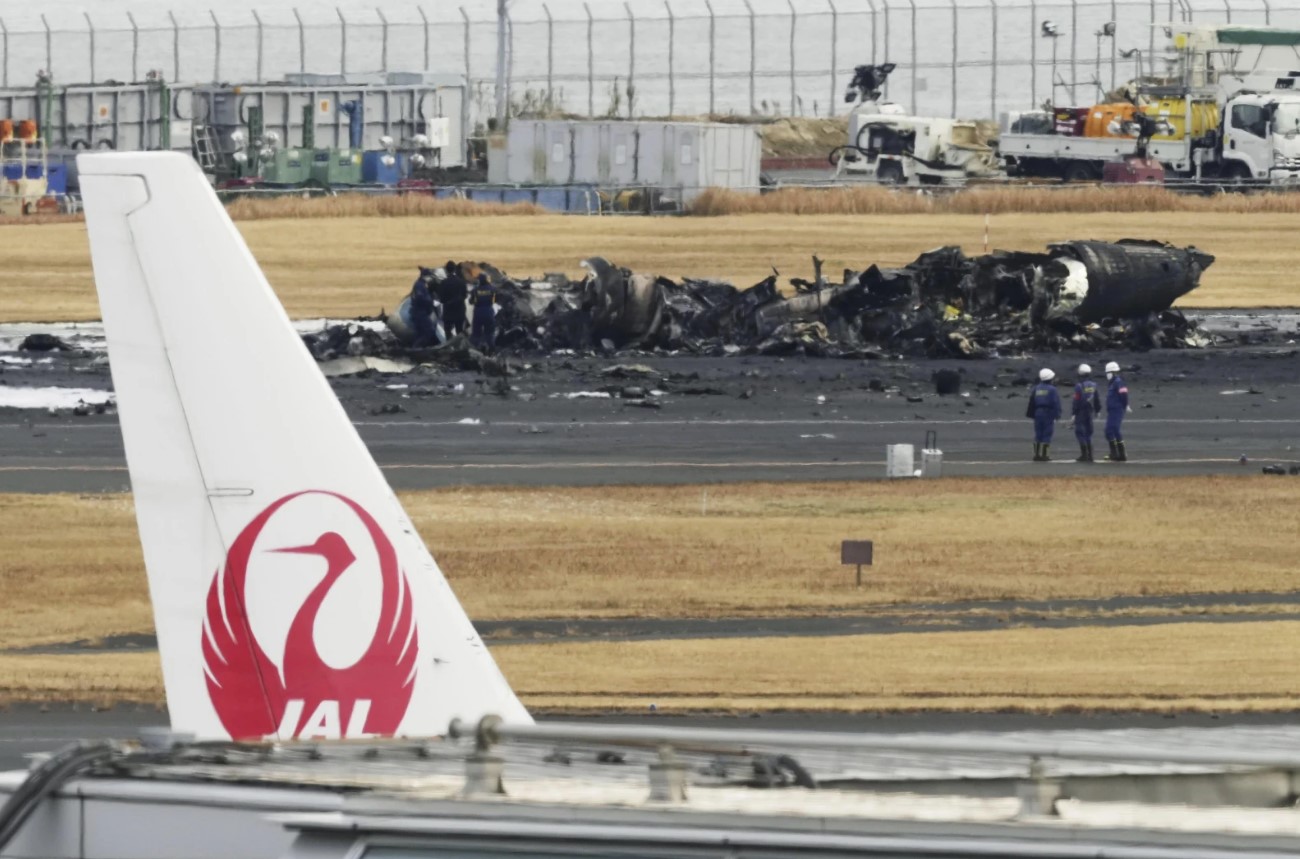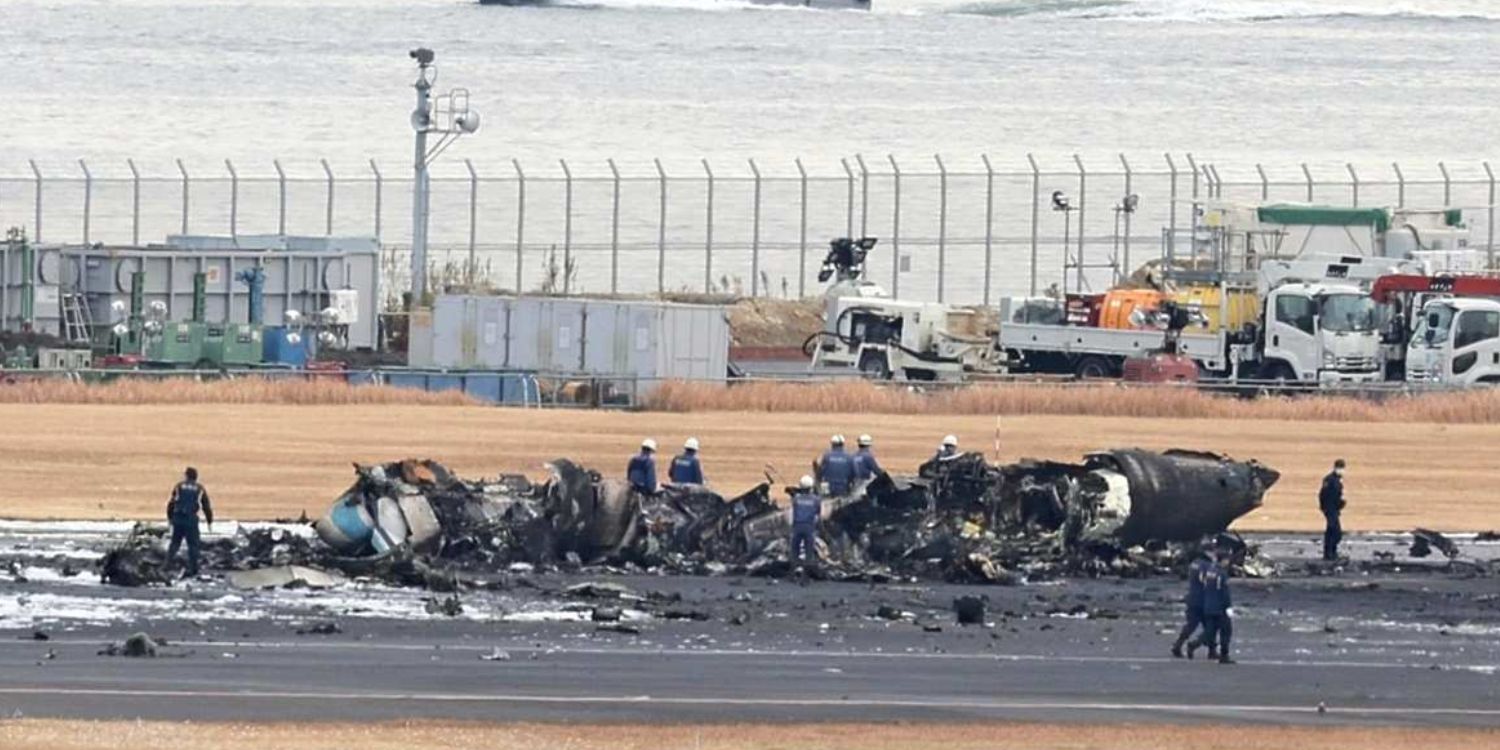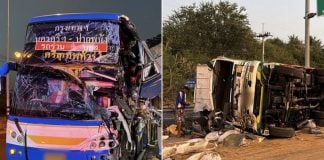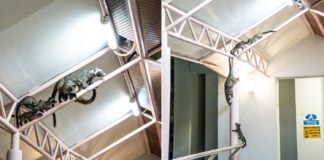Traffic Control Transcripts Find That Japan Coast Guard Plane Wasn’t Cleared For Takeoff
Recent news of the fatal collision between a Japan Airlines (JAL) plane and a Japan Coast Guard aircraft shook the world after images of the fiery scene circulated.
Reports later emerged that five crew members aboard the latter vehicle perished in the tragedy.
Japan Airlines Fire: 5 People Aboard Coast Guard Plane That Crashed Dead, Captain Seriously Injured
Investigations have since found that the Coast Guard plane hadn’t been cleared for takeoff prior to the accident.
Records show Japan Cost Guard plane didn’t have takeoff clearance
According to The Asahi Shimbun, communication records have shown that the Coast Guard aircraft did not receive permission to enter the runway.
At 5.44pm that day, air traffic controllers informed the JAL plane, an Airbus A350-900, that there was “no obstruction to landing on runway 34R.”
The JAL crew responded by repeating the same details for confirmation.
AP News reported that the Coast Guard aircraft then said it was taxiing to the same runway.
Traffic control subsequently instructed it to approach the stop line ahead of the runway. The controller acknowledged the Coast Guard’s departure priority, with the pilot stating that he was heading to the stop line.
There was no confirmation of any further communication between air traffic controllers and the two planes until 5.47pm. This was when the accident occurred on the runway.

Source: NTV News on YouTube
The Transport Ministry in Japan indicated on 3 Jan that as such, air-traffic controllers never gave the Coast Guard plane permission to enter the runway.
Tokyo police have also begun investigating the incident for possible professional negligence, stated AP News.
Investigation by safety board still ongoing
The JAL plane departed from Shin Chitose airport near Sapporo at 4.15pm on 2 Jan while the Coast Guard plane was flying off for Niigata to deliver relief supplies for victims of the earthquake that hit the country on 1 Jan.
After the collision at 5.47pm, the JAL plane, still in flames, rolled about 1,000 metres down the runway before slowing to a stop.
According to The Asahi Shimbun, the following Coast Guard members were killed in the accident:
- a 41-year-old co-pilot
- a 27-year-old communications officer
- a 39-year-old search radar officer
- a 47-year-old mechanic
- a 56-year-old maintenance worker
The Japan Transport Safety Board (JTSB) labelled the collision an aviation accident and is currently investigating the communication records. Six experts from the board examined the remains on the runway.
JTSB shared on 3 Jan that a voice recorder and flight recorder were recovered from the wreckage of the Coast Guard aircraft.

Source: Kyoto News via AP News
Takuya Fujiwara, an aviation accident investigator with the safety board, said that they have yet to find similar recorders from the JAL plane.
He also noted that the fires had severely damaged the fuselages of the two planes.
“We cannot give a clear answer at this time as to why they collided,” he said. “We will investigate what we can and finalise our report.”
Different understandings of permission to take off on both sides
Investigators from the board additionally plan to interview the pilots of both planes and relevant individuals including air traffic control officials to determine how the aircraft ended up on the runway together.
Both sides apparently had understood their permission to use the runway differently.
NHK World-Japan said that a source from the Coast Guard claimed that its pilot had received the green light to take off.
In contrast, JAL Managing Executive Officer Tadayuki Tsutsumi said on 2 Jan that the airline’s plane had been making a”normal entry and landing” on the runway, quoted AP News.
Noriyuki Aoki, a separate JAL executive, likewise said that the commercial flight had clearance to land.
Have news you must share? Get in touch with us via email at news@mustsharenews.com.
Featured image adapted from The Japan News – by The Yomiuri Shimbun.








